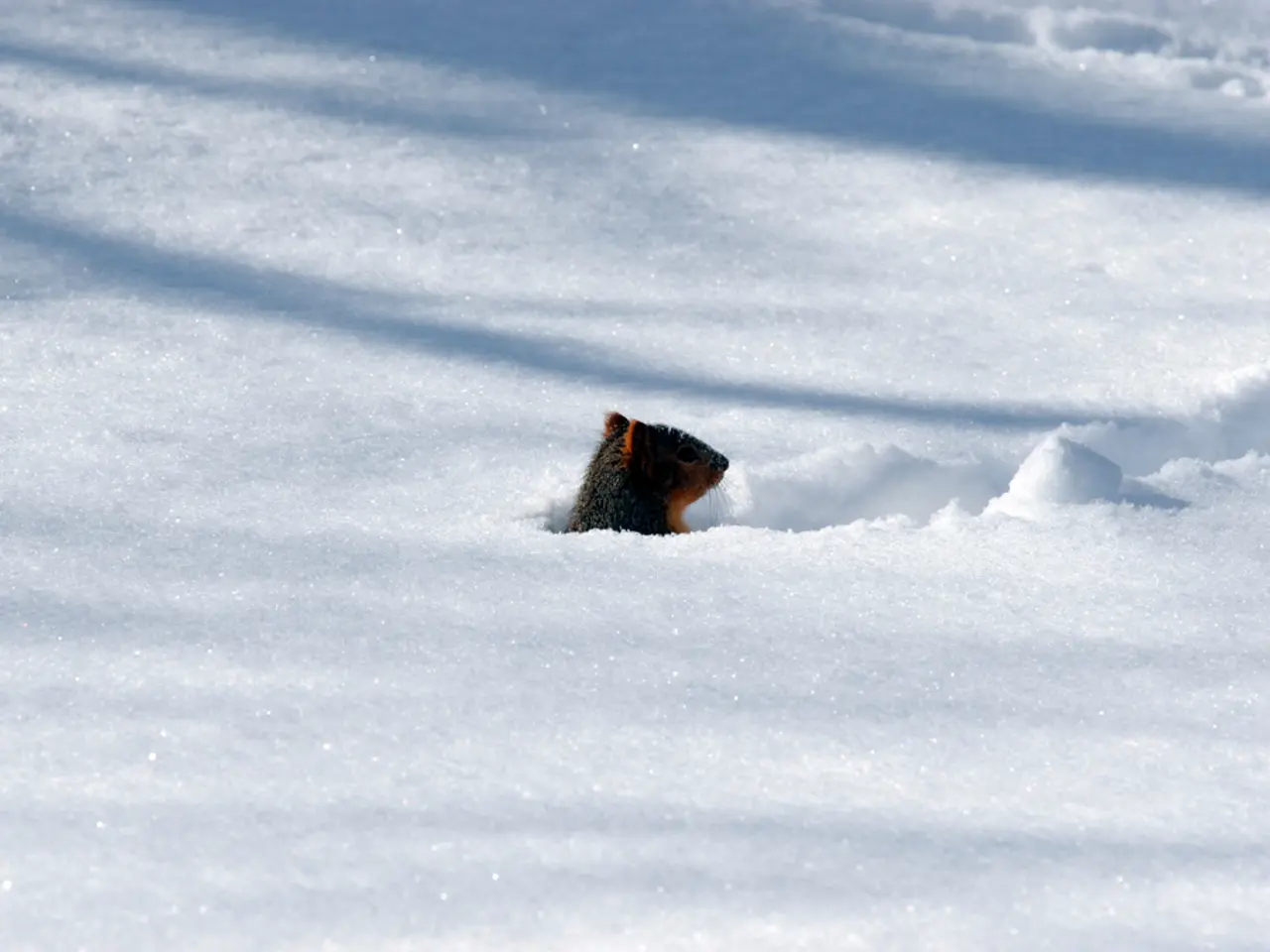Guidelines for Verifying if Trails Are Covered in Snow
For hikers planning to tackle snowy trails, understanding snow conditions is crucial. Here's a comprehensive guide on how to check for snow on hiking trails using free and paid online tools, as well as local resources.
## Free Online Tools
1. **Satellite Imagery**: Start with freely available satellite views from platforms like Google Earth or Google Maps to get an initial idea of snow conditions. For more detailed insights, consider using premium membership services such as Gaia GPS, which offers the SNODAS snow layer.
2. **Snow Depth Maps**: Websites like SNODAS provide modeled snow depth estimates that can help you understand snow conditions on trails. While exact trail conditions might not be available, these models give a good idea of snow presence in the area.
3. **National Park and Trail Websites**: Official websites of national parks and other trail organizations often include reports on snow and other hazards, providing valuable insights into trail conditions.
4. **Weather Apps and Forecasts**: Utilize weather apps that provide real-time forecasts and snowfall data. These can help predict if additional snow is expected and how it might affect your hike.
## Local Resources
1. **Local Guides and Hiking Clubs**: Contact local hiking clubs or guides for firsthand information on trail conditions. They often have recent updates and insights into specific trails.
2. **Visitor Centers and Ranger Stations**: Visit visitor centers or ranger stations for detailed information on trail conditions. These locations usually have up-to-date reports from other hikers and rangers.
3. **Social Media and Forums**: Follow local hiking forums and social media groups to see recent posts and photos from hikers on the trails. This can provide real-time updates on snow conditions.
4. **Local News and Reports**: Check local news outlets for any recent snowfall or weather updates that could affect trail conditions.
In addition to these resources, it's recommended to check forecasts, including temperatures and windchill. The US Department of Agriculture operates over 800 remote snow measurement systems in watersheds around the United States called SnoTel, which can be viewed on CalTopo. CalTopo also offers a Custom SNODAS Snow Layer, as well as high-resolution Sentinel Satellite imagery, updated every week, for snow reconnaissance.
Remember, safety should always be a priority. Never put yourself in a situation where dangerous actions are required. It's essential to have the right gear, understand risks such as avalanche zones, and hike responsibly.
For beginners, it's advisable to gain experience hiking in the snow on easy trails before tackling steeper slopes. Organizations like REI and the Sierra Club offer winter hiking classes and group hikes.
If conditions differ from expectations during the hike, it is acceptable to turn around and call it a day to ensure safety. Ski resorts sometimes offer snowshoe trails as an alternative when conditions are not suitable for traditional hiking.
Local hiking communities often share trail conditions online through various platforms such as Facebook Hiking Groups, Reddit Hiking Groups, Trail Report Sites, Recent Trip Reports, Park Conditions Page, Park Webcams, Facebook Park Pages, Twitter Park Pages, Local Trail Associations, Area Forums, and Local Avalanche Centers. The National Weather Service provides forecast locations across the United States.
By combining these online tools with local insights, you can make informed decisions about your hiking plans, ensuring a safe and enjoyable experience.
- incorporating satellite imagery from platforms like Google Earth or Google Maps can provide a preliminary understanding of snow conditions, with Gaia GPS offering a premium SNODAS snow layer for more detailed insights.
- Snow Depth Maps from websites like SNODAS can offer modeled snow depth estimates, helping hikers understand snow conditions on trails, even if exact trail conditions might not be available.
- Official websites of national parks and trail organizations often include reports on snow and other hazards, providing valuable insights into trail conditions that are critical for planning hikes.
- Weather apps with real-time snowfall and forecast data can help predict if additional snow is expected and how it might affect hiking trails.
- Local resources like hiking clubs, visitor centers, ranger stations, social media groups, news outlets, and local avalanche centers can offer firsthand information on trail conditions, enhancing safety for outdoor enthusiasts embracing the lifestyle of hiking, nature exploration, and outdoor-living.




